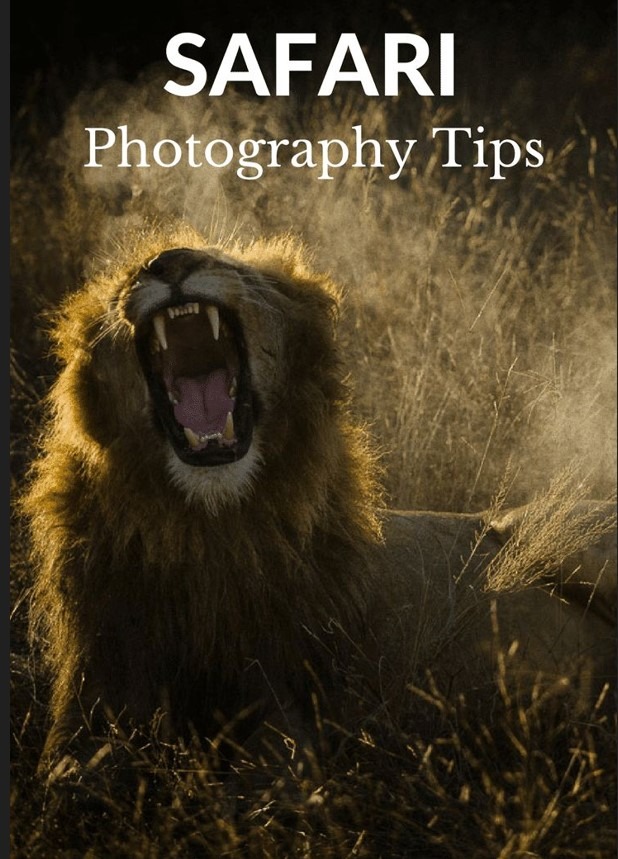Introduction to Safari Photography Tips
Capturing wildlife on safari is thrilling—but also challenging. These safari photography tips will guide you through choosing the right gear, using proper settings, respecting wildlife, and framing images that tell stories. Whether you’re focused on African safari photography tips, an Africa safari photo guide, or general safari photo tips, this article equips you to build stunning wildlife portfolios.
Why Safari Photography Is Unique
Safari photography combines unpredictable subjects, changing light, and dusty conditions into one creative challenge. Animals move unpredictably, your shooting environment shifts by the minute, and you’re often confined to a vehicle. The secret lies in patience, observation, and being technically ready. For more context, G Adventures offers expert preparation tips for safari photography.
What to Expect on an African Safari
Choosing when and where matters: the dry season (June–October) delivers denser wildlife and clearer landscapes. Top destinations include Kenya’s Masai Mara, Tanzania’s Serengeti, Botswana’s Okavango Delta, and South Africa’s Kruger National Park. Each offers unique photographic opportunities.
Essential Safari Photography Gear
Recommended gear includes:
- Primary camera body and second body, to avoid lens swaps in dusty conditions.
- Telephoto lens: minimum 200–300 mm; ideally up to 400–600 mm or an 80–400mm zoom.
- Beanbag or window mount for stability (SafariWise Gear Guide)
- Backup batteries, SD cards, and dust protection gear (David Lloyd Photography)
Best Camera Settings for Safari Photography
- Early morning: f/5.6, 1/200 sec, ISO 2000
- Motion: f/4–5.6, 1/500–1/1000 sec, ISO 800–1600
- Bright daylight: f/8, 1/500 sec, ISO 200–400
- Use burst mode for action – Photography Playground
Understanding Light & Golden Hours
Golden hours offer soft, flattering light. Overcast skies create even, shadow-free portraits. Avoid harsh midday sun. Learn to frame cloudscapes and side-lighting from The Wandering Lens.
Top African Safari Photography Tips for Beginners
- Study animal behavior to predict movement – Maps and Merlot
- Shoot at various focal lengths for flexible compositions
- Frame eye-level shots through open windows
- Always stay alert—wildlife often appears unexpectedly
Advanced Safari Photo Tips for Pros
- Use storytelling: include habitat elements
- Leverage negative space and deliberate blur
- Anticipate behavior through cues like movement or ear position
- Master panning to show motion
Using a Telephoto Lens on Safari
Long lenses let you shoot from distance. Use a beanbag on the vehicle window. Learn more on lens techniques at SafariBookings.
Framing Wildlife in Their Natural Habitat
Include context like trees, grassland, or water to add storytelling. Use foreground for depth. The Times shares insights on professional composition.
Shooting Action: Capturing the Perfect Moment
- Use AF-C mode
- Shutter speeds above 1/1000 sec
- Capture motion like running animals or birds in flight
Safari Photography Guide for Ethical Shooting
- Don’t disturb wildlife
- Avoid flash
- Follow guide instructions to preserve habitats – One Girl Whole World
Importance of Patience in Safari Photography
Wait silently—rewards come with time. Be ready for the unexpected.
Tips for Shooting from a Safari Vehicle
- Stabilize with beanbags
- Shoot slightly outside the window for cleaner angles
- Minimize movement inside vehicle to avoid blur
How to Take Great Wildlife Portraits
- Focus on sharp eyes
- Use wide apertures
- Follow rule of thirds
- Capture interactions or young animals
Shooting Birds on Safari
- Use high shutter speed (~1/2000 sec)
- Track movement in burst mode
- Use clean backgrounds when possible – The Wandering Lens
Best Locations for African Safari Photography
- Masai Mara & Serengeti for migrations
- Okavango Delta for wetlands
- South Luangwa for walking safaris
- Kruger Park for variety
Africa Safari Photo Guide: What to Pack
- 2 camera bodies, telephoto + wide lenses
- Beanbag, lens cloths, batteries, SD cards
- Neutral clothes, layers, sun protection
Post-Processing Wildlife Photos
- Shoot RAW
- Sharpen eyes, reduce noise, keep natural tones
- Consider B&W selectively
Creating a Photo Story from Your Safari
Create a visual narrative:
- Open with landscapes
- Mid-story with action
- Close-ups for emotion
- End with sunsets or scenery
Common Mistakes to Avoid
- Overexposing skies
- Swapping lenses in dust
- Crowding wildlife
- Shooting through mesh or glass
How Weather Affects Safari Photography
Use cloud cover for mood and texture. Avoid heat haze by shooting early. Clean your gear often.
Travel and Safety Tips for Safari Photographers
- Use licensed guides
- Remain seated and follow rules
- Get travel insurance for gear coverage
Using Your Safari Photos for Social Media or Prints
For social: crop square/vertical, include captions with species/location.
For prints: export high-res TIFF or JPEG with minimal compression.
Conclusion: Make Every Safari Shot Count
These safari photography tips transform your trip into a photographic journey. From choosing the right gear and settings to ethical shooting, patience, composition, and storytelling—you’ll return with images that do more than document wildlife. They capture the spirit of the wild.
FAQs
What gear should I pack for an African safari for photography?
Bring 2 camera bodies, a 300–600mm telephoto lens, a 24–105mm zoom, stabilization gear, and storage protection.
How do I pick effective camera settings for fast-moving wildlife?
Use shutter 1/500–1/2000 sec, aperture f/4–f/5.6, ISO under 1600. Use burst mode.
What are ethical considerations when photographing wildlife?
Avoid flash, don’t disturb animals, follow your guide, and keep a respectful distance.
Which African safari destinations excel in photography opportunities?
Kenya, Tanzania, Botswana, Zambia, and South Africa—each offers diverse wildlife and landscapes.
How should I approach post-processing safari photos?
Edit RAW files, sharpen selectively, avoid over-editing, and use B&W for dramatic effect.
Read More About: Photography Tips for Capturing the Magic of a South African Safari

